When you think of Lithuania, the first thing that comes to mind might not be white-sand dunes and blue waters.
But perched between the Curonian Lagoon and the Baltic Sea is a 98-kilometer piece of land known as the Curonian Spit (or Kursiu Nerija in Lithuania).
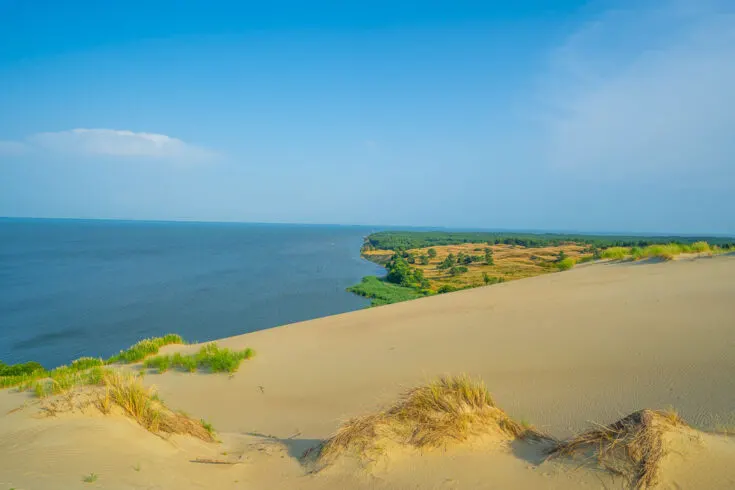
The stretch is covered with sand dunes and pine forests and is one of the most beautiful places in the small country.
Many people overlook the Curonian Spit as the coast sits a fair distance from Vilnius, Lithuania’s capital. However, a trip to this hidden gem is most certainly worthwhile.
The Curonian Spit offers plenty to see and do with spectacular scenery, charming villages, and various attractions.
Curonian Spit is also one of four UNESCO World Heritage Sites in Lithuania.
To follow is a guide on everything you need to know about visiting the Curonian Spit. This includes when to go, where to stay, what to see, and more.
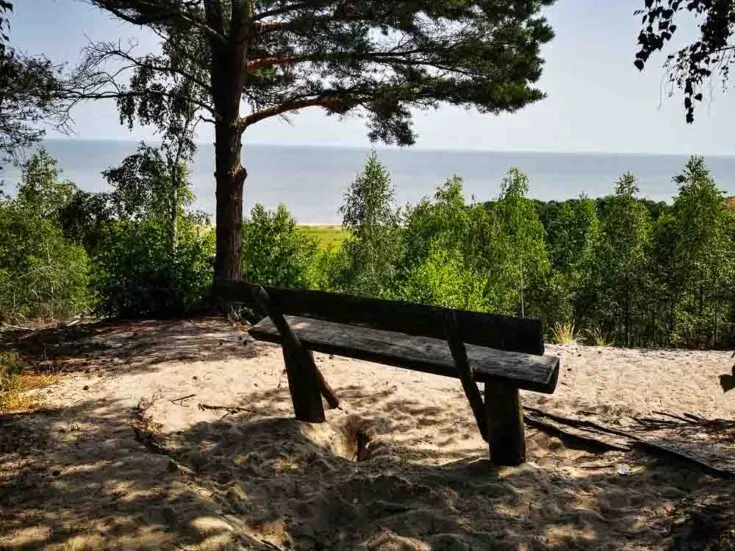
Where is the Curonian Spit
The Curonian Spit is one of the longest spits in the world. It extends from Southwestern Lithuania to Kaliningrad’s Sambian Peninsula, passing through the Baltic Sea.
Just over half of the spit belongs to Lithuania, a country north of Poland. The rest belongs to Russia. Both the Lithuanian and Russian sides of the spit are national parks.
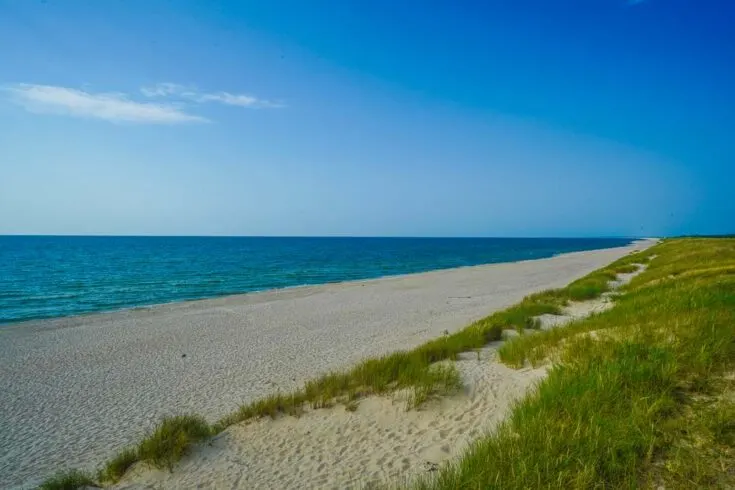
Best Time to Visit the Curonian Spit National Park
Offering an array of outdoor fun, from its pristine beaches to its exciting trails, the Curonian Spit is best enjoyed when temperatures are warmer.
As such, the best time to visit the area is in summer, particularly between early June and mid-September.
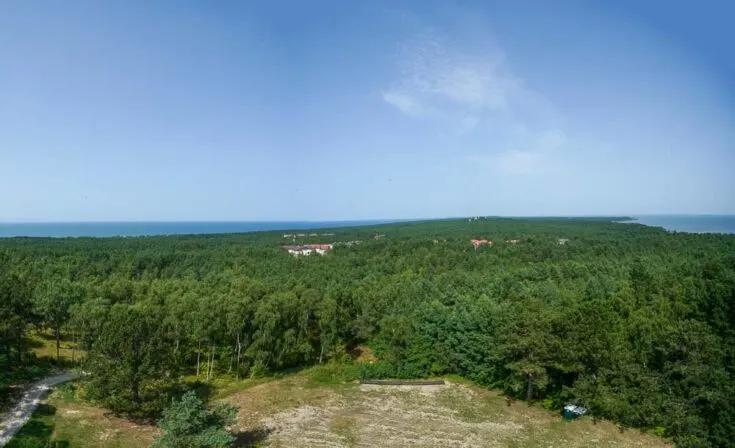
Spring and fall are quieter and offer their own charms; however, some hotels and restaurants close for the season following September.
How to Get to the Curonian Spit
To reach the Curonian Spit, you will need to take a ferry from Lithuania’s charming port city, Klaipeda.
There are two terminals here – namely the Old Ferry Terminal and New Ferry Terminal.
The old ferry runs from 7 am until 22.15, and the new ferry runs 24 hours a day. The ferry trip from Klaipeda across to Curonian Spit takes less than 10min.
Two ferries travel from the Old Terminal to the Curonian Spit. One takes passengers from Klaipeda to Smiltyne, while the other travels to Nida with stops in Juodkrante.
The ferry is cost 1,10 euro for pedestrians and with people bike cycles and 13 Euro per car.
The ferries from the New Terminal only travel between Klaipeda and Smiltyne.
During summer, there are frequent departures from both terminals; however, it is best to double-check the schedules when planning your trip.
During fall, winter, and spring, ferry rides can be canceled due to inclement weather.
For more information on how to get to Klaipeda, check out our Klaipeda Lithuania travel guide.
Curonian Spit – Things to Do
Throughout the Curonian Spit, there is plenty to see and do. From the small towns to its many natural wonders, one can easily spend a day or two exploring the peninsula.
To follow are some of the top attractions found on the Kursiu Nerija.
Climb the Pardanis Dune
The Pardanis Dune is the main attraction in Nida, as well as on the entire Curonian Spit. As such, this should be the first place you visit.
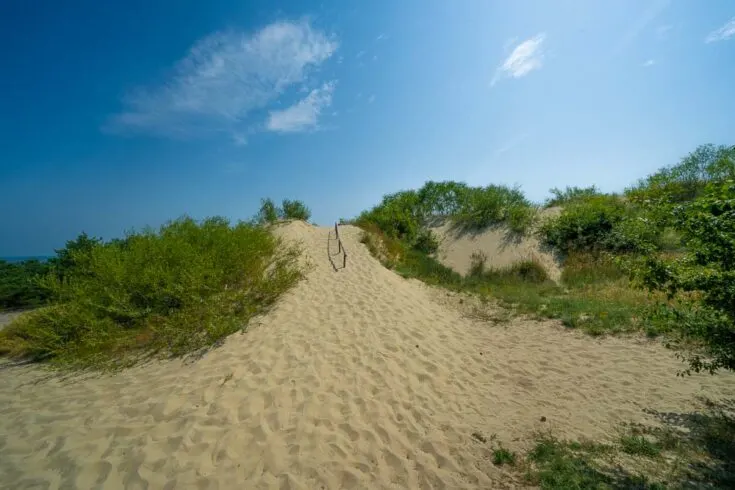
At the height of 52 meters (170 feet), this sand dune is one of the highest on the Curonian Spit but not the highest; that´s the Vecekrug Dune, which is 67,2m high.
To reach the top, follow the path south along the Curonian Lagoon.
Eventually, you will reach a wooden staircase, taking you up towards the sundial at the top of the dune. The wooden staircase is often completely covered in the moving sand.
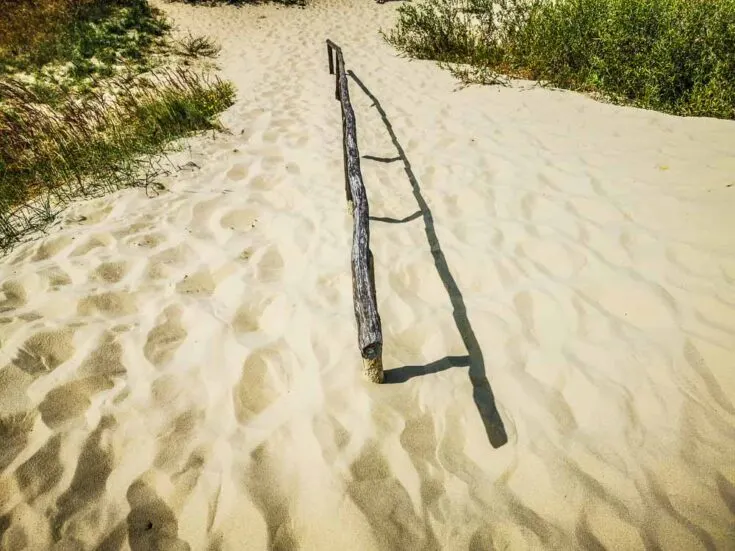
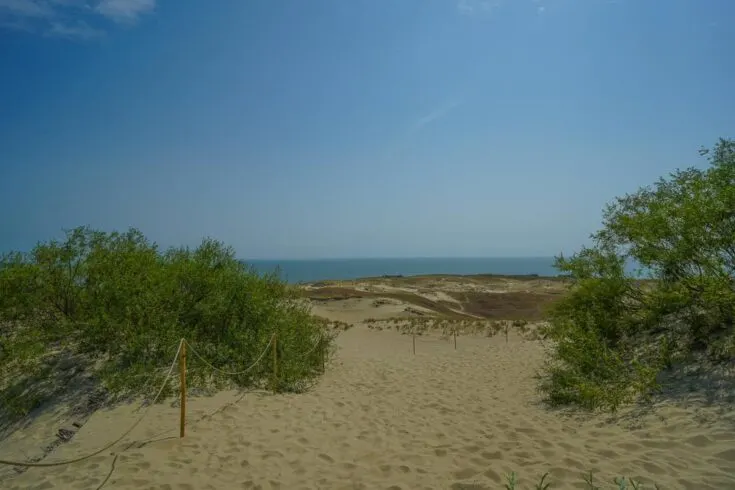
Here, you will be met with sweeping views of the dunes, lagoon, and Baltic Sea. This is also one of the best spots to catch the sunrise or the sunset.
Fun fact: – The Pardanis Dune is a wandering dune, meaning that the Lithuanian landform moves a couple of centimeters each year.
And while it moves slowly, the dune has managed to swallow entire villages over the past few centuries.
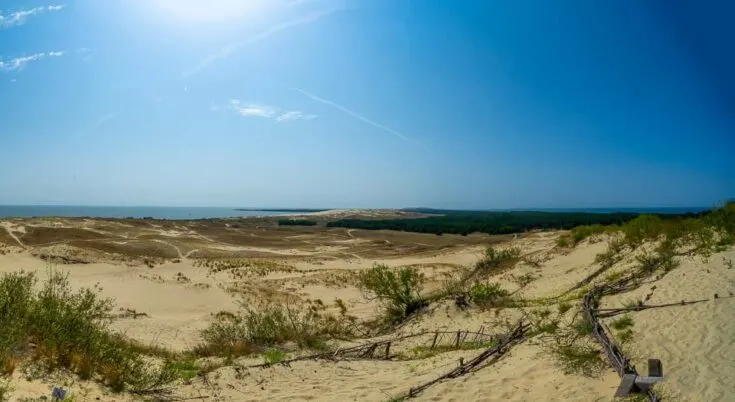
The Curonian Spit Sundail
The Curonian Spit Sundial was built in 1996 on the top of the 53m heigh Pardanis Dune. With the obelisk adding another 13,8m.
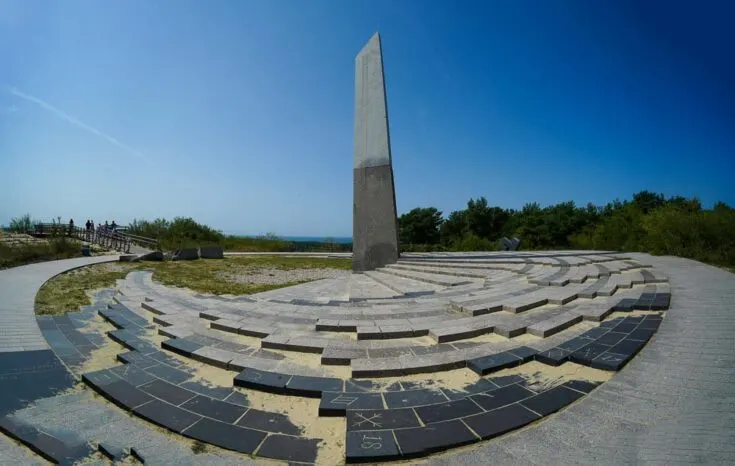
Its shadow falls on its semi-circular steps, the steps of which symbolizes the hours and the rows of stairs stand for the months; the sundial shows the local astronomical time here in Curonian Spit.
The obelisk broke in two during a storm in 1999, but it was soon put back together agian.
Walk Around Nida Village
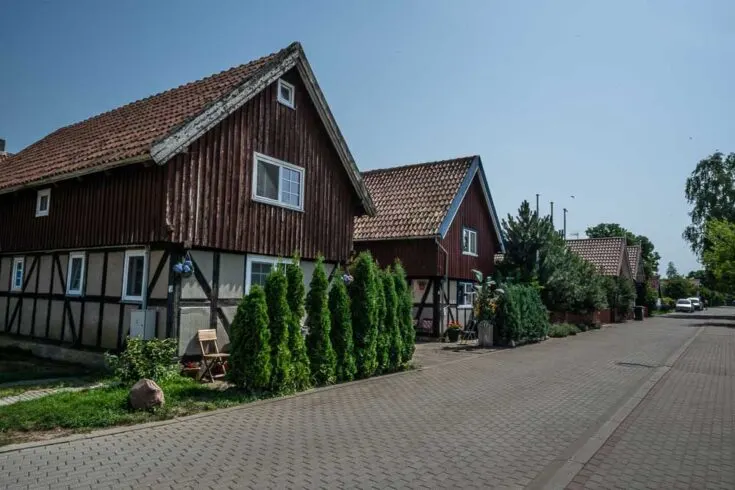
A worthwhile trip is to simply set out on foot and explore Nida’s quaint village. Throughout the village, you will spot many traditional, colourful houses.
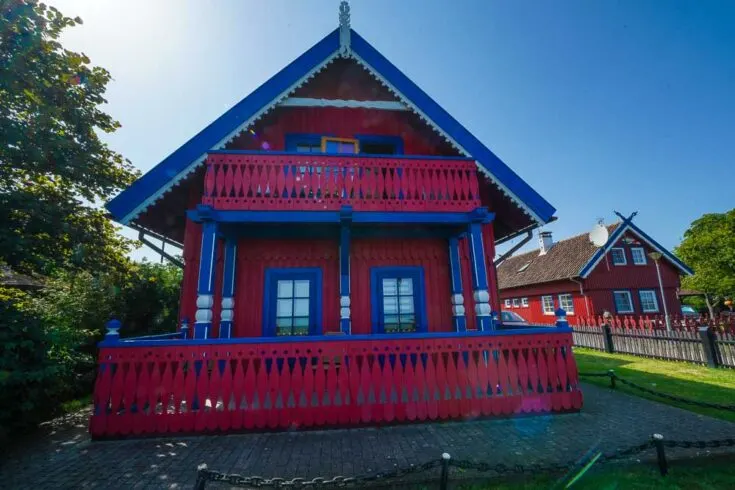
There is also a wonderful scenic walkway along the lagoon. If you’re visiting in the summer, we recommend you rent a bike. This is a fun way to explore the village and its surroundings.
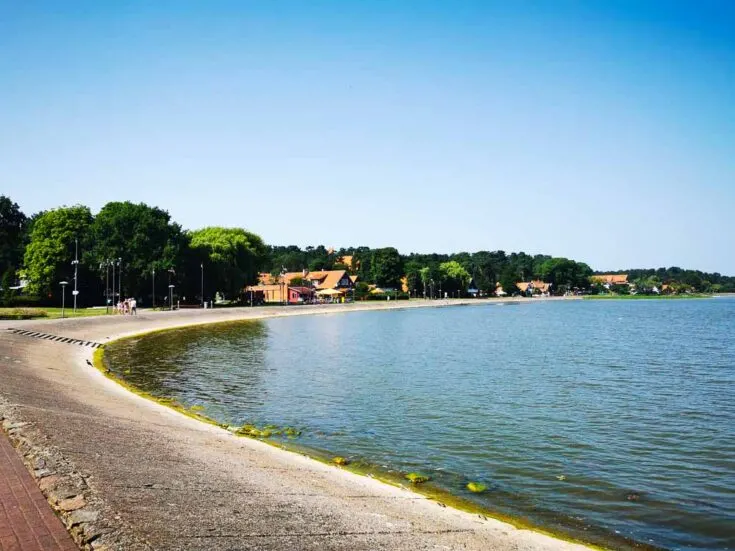
Visit the Thomas Mann Memorial Museum
The German writer and Nobel laureate used to own a beautifully situated villa on the Curonian Spit.
Today, the beautiful wooden home serves as a museum, housing many of Mann’s original possessions.
These include old photos, books, memoirs, and documents mirroring the writer’s work.
Visit the Nida Ethnographic Cemetery
Visiting a cemetery might sound weird, but trust me, this one is worth checking out. The woodland cemetery features some fine examples of kriskstai.
These are traditional wooden tombstones that date back to Lithuania’s pagan roots.
The unique grave markers are generally symmetrical and resemble trees, birds, and plants. Since the 19th century, people have also begun using crosses.
Look Around the Amber Gallery
The Amber Gallery is based in an old fisherman’s hut on the northern side of town. As the name suggests, this museum and shop are dedicated entirely to amber.
At the museum, you can learn all about the fossilized resin and explore the amber-ornamented garden. You can also enquire ahead for an hour-long amber-processing class.
The museum also doubles as a boutique store, selling bespoke amber jewelry. These unique pieces range in hues from yellow to red; but, the most highly prized colors are white, black, and blue.
Fun fact: Lithuanian amber is comparable to gold in the country. As such, you will find a lot of amber jewelry for sale in Nida and throughout Lithuania.
View the Cormorant & Heron Colony
One of Europe’s largest cormorant and heron colonies is found in a forest 1 kilometer south of Juodkrante. Wooden steps lead from the road to a viewing platform where.
From here the platform, marvel at the thousands of nests amid the pine trees. The sound of the 6,500-strong colony is also astonishing.
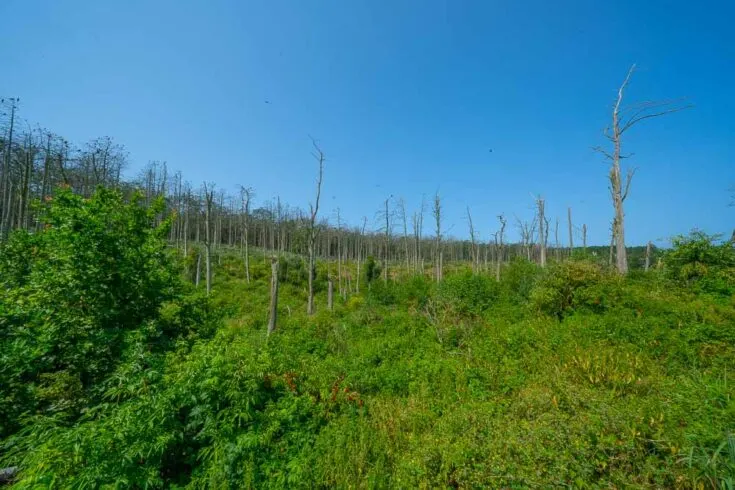
Due to the birds’ poo, the once green pine forest appears almost lifeless with its blackened and broken trees. Other species found in this forest include starlings, warblers, thrushes, and woodpeckers.
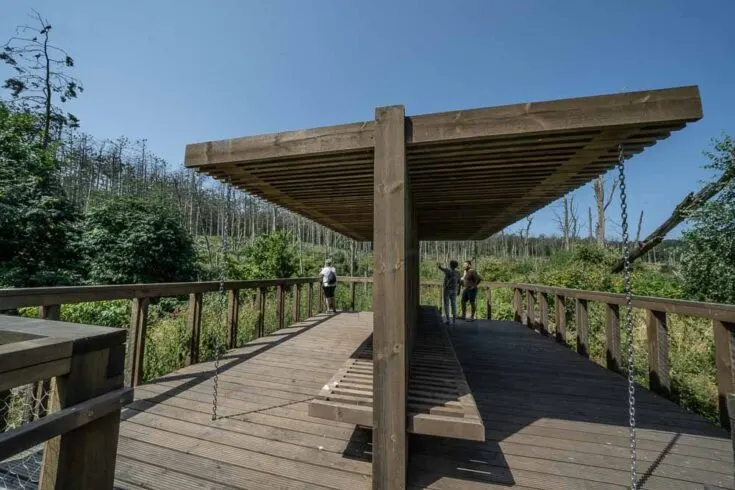
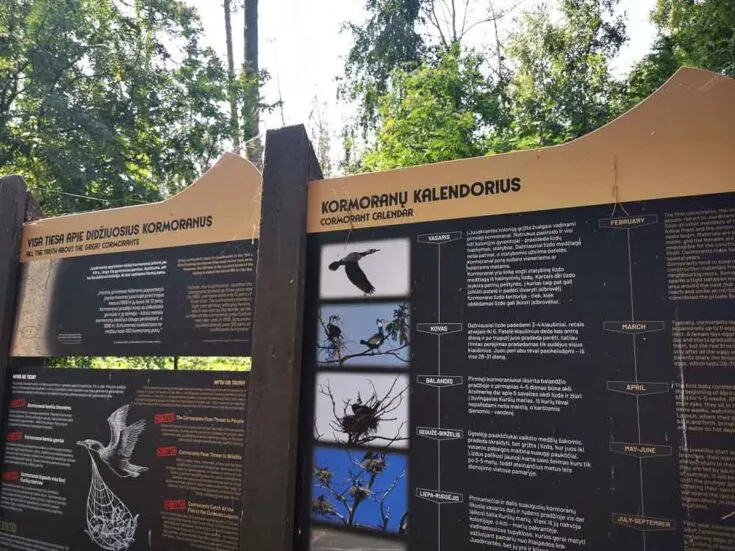
Climb the Hill of Witches
The Hill of Witches is an outdoor sculpture park located in a forest in Juodkrante. The unique open-air gallery is home to around 80 wooden sculptures resembling witches and devils.
These have been carved by various Lithuanian artists over the years, starting in 1979.
The carvings found on this hill are based on Lithuania’s pagan traditions. Today, Lithuanians continue to celebrate the midsummer festival, St. Jonas Day, on the hill.
Explore the Nagliai Nature Reserve / The Dead Dunes
To view one of the Curonian Spit’s most spectacular natural elements, visit the Nagliai Nature Reserve trails.
The trails take you on a peaceful journey through what many Lithuanians refer to as the Mirusios Kopos, meaning the Dead Dunes.
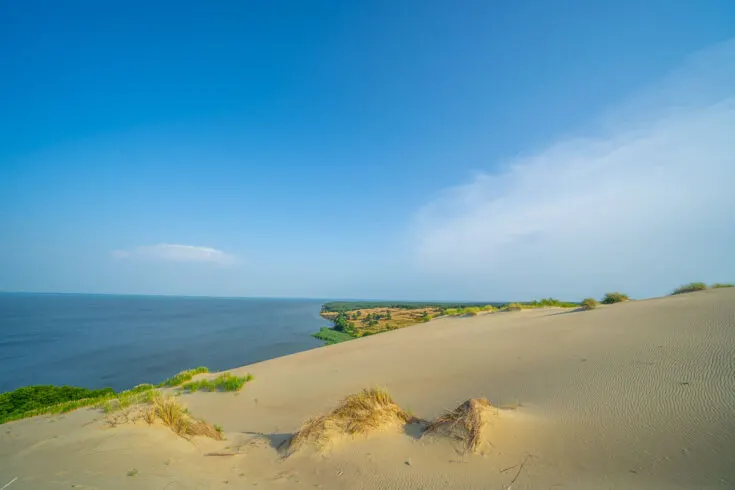
The Dead Dues got its name after the sand dunes covered 4 villages which now are hidden under the sand and lost forever.
There were at least 14 villages in Curonian Spit which was covered by sand between the 17th and 19th centuries.
The shifting sand used to move 0.5 to 15 meters a year, and after a long and unsuccessful fight against the sand, the locals gave up the fight against the sand and moved away.
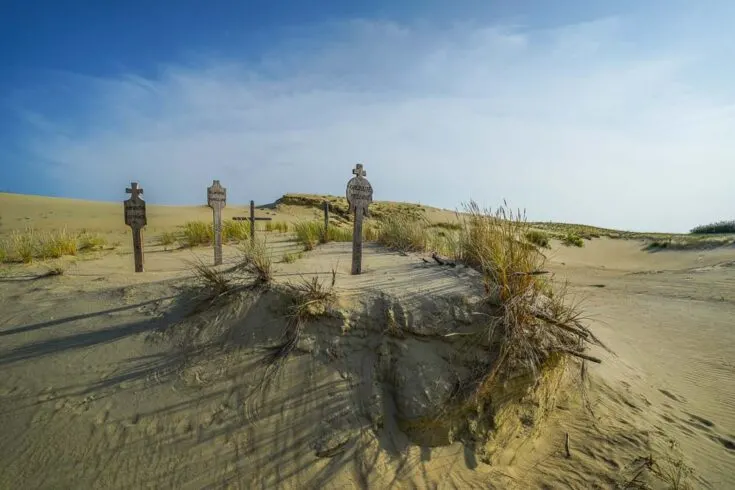
The trail follows a 300-meter-long boardwalk that is accessible for everyone before you reach the sand dunes, which can be quite hard and tiring to walk across.
However, for the best views, you will need to take a short walk along the sand.
Where the boardwalk ends, you can climb the dunes for stunning views of the Curonian Spit and its surroundings.
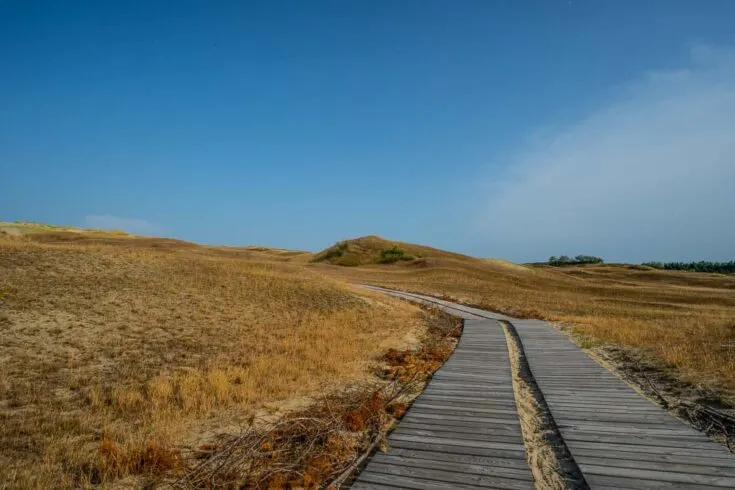
A great way to explore the dunes and their surroundings is on a guided tour. For a unique experience, check out this Curonian Spit guided canoe tour.
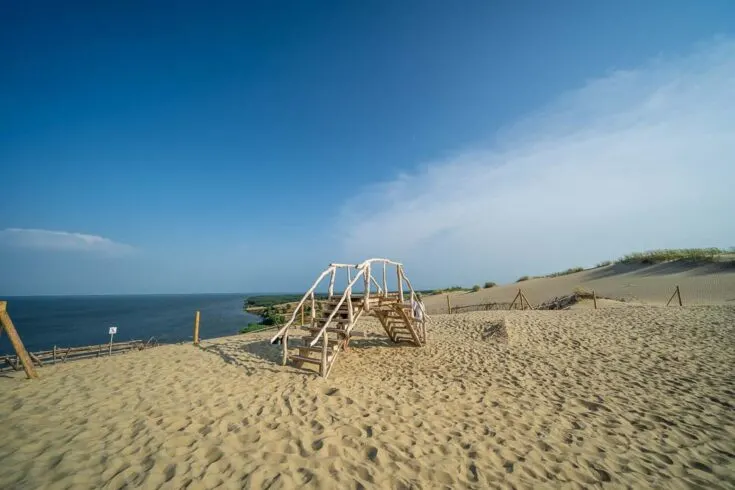
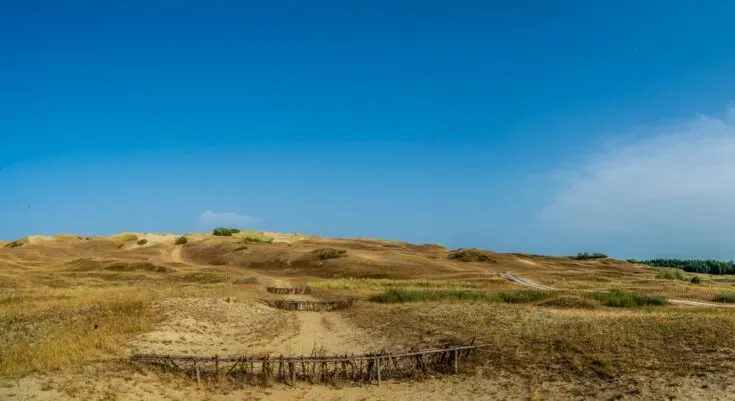
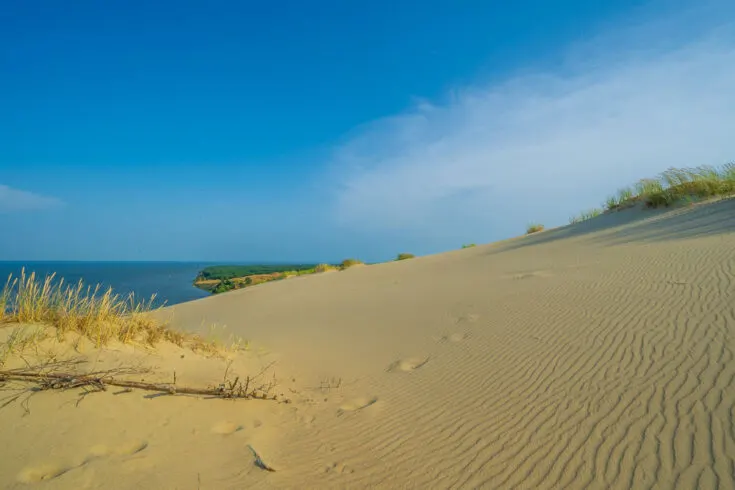
Climb Nida Lighthouse for a panoramic view
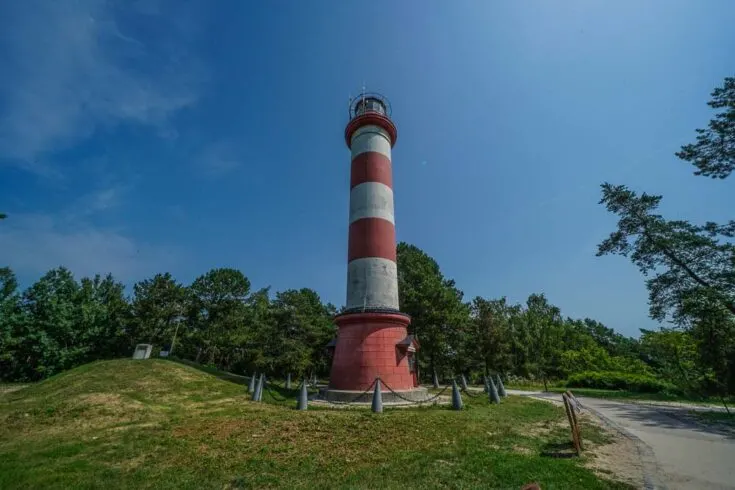
There´s been a lighthouse on Curonian Spit since the 1860s, but unfortunately, so was the original lighthouse destroyed by German Soldiers at the end of WW2.
So the current Nida lighthouse only dates back to 1945. It is 27m / 89 feet tall and open to the public for a 5 euro entrance fee.
Climb the 200 stairs to the top of the lighthouse for a 360* view over Curonian Spit.
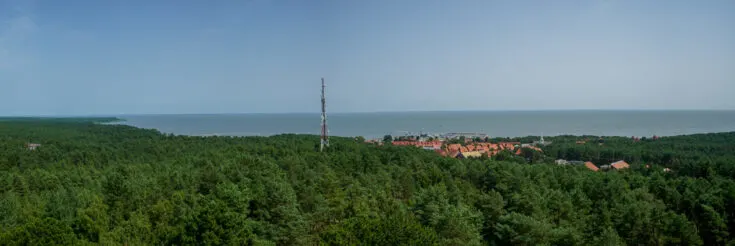
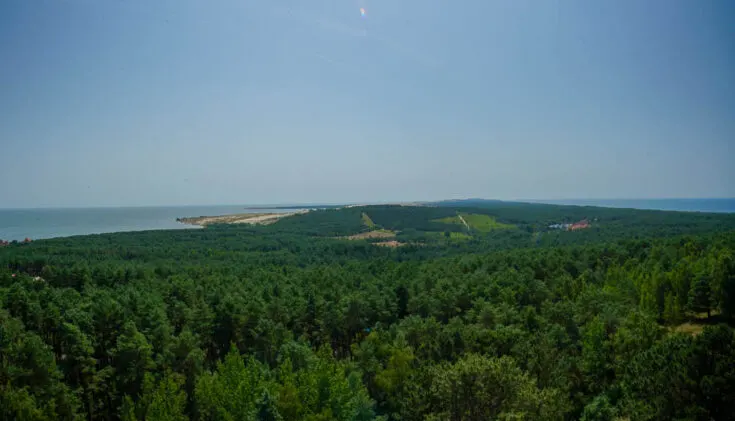
Hit Up the Baltic Beaches
Take a footpath through the pine forests, and you will find yourself at one of the most beautiful beaches in all of Europe.
The 100-kilometer golden sandy coast is a popular spot amongst tourists and locals alike.
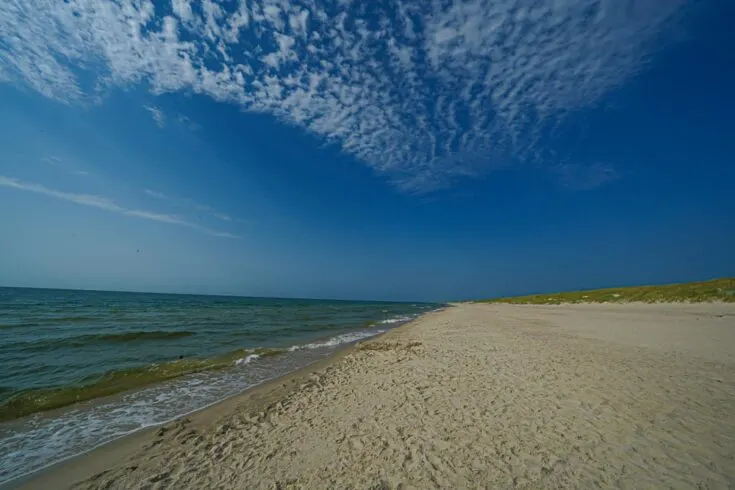
In the summer, the Curonian Spit’s beaches get quite busy. However, if you walk a bit further, chances are you will have an entire beach to yourself.
The same can be said if you’re visiting during the off-season.
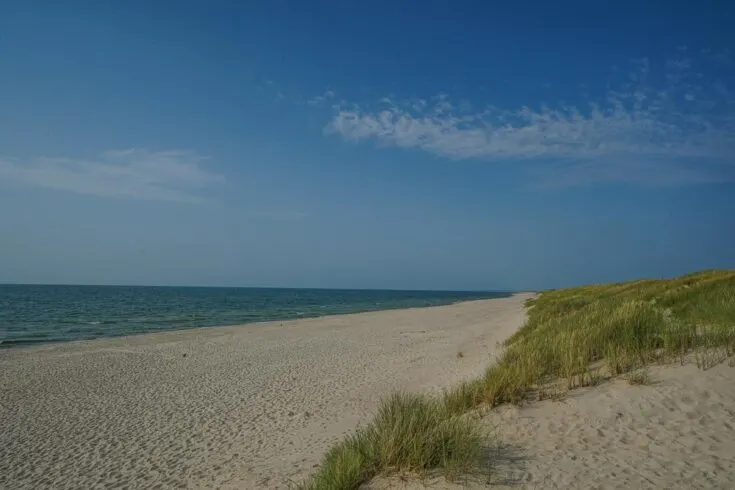
Activities found along the Baltic coast include boat trips and plenty of water sports; however, this is limited to summer.
On rougher days, small amber pieces often wash up on the shore. If you’re visiting with kids, spend a few hours exploring the beaches and seeing how much amber you can collect.

Eat Local Foods
Visiting a new destination is not just about the landmarks but the food as well. While exploring the Curonian Spit, do not skip out on trying some of the local food.
One speciality found here is smoked fish.
There are many places selling and serving smoked fish in Nida and Juodkrante. Keep an eye out for signs that read “Rukyta Zuvis” or “Rukytos Zuvys”, or simply ask the locals for the best spots.
Vecekrug Dune the tallest sandune on Curonian Spit
The tallest sand dune in Lithuania and Curonian Spit with a height of 67,2m, Vecekrug Dune, also called The Old Inn Dune it´s also the second-highest sand dune in all of Europe after the Dune of Pilat in France.
However, the Vecekrug Dune might look like a sand dune; it´s fully covered in pine, like a mountain of pine trees.
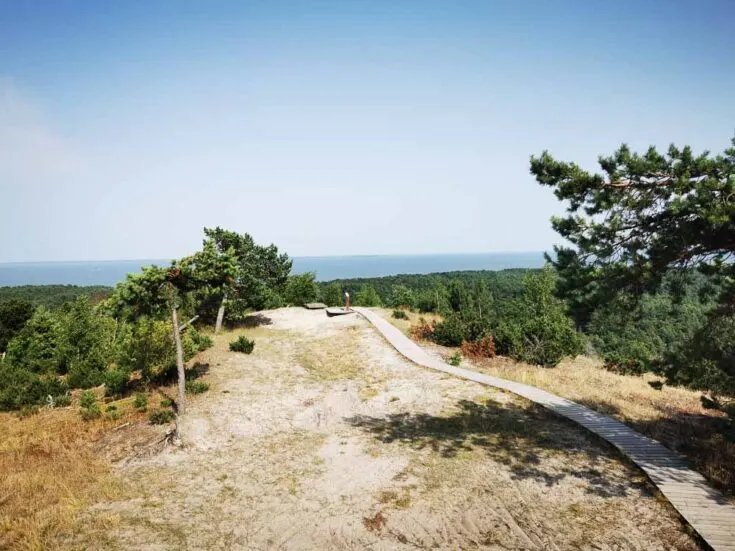
In 1803 local villages started work with stabilizing and planting trees all over the dune to stop the shifting sand to constantly move around and making threats to the local settlements around the area.
By 1902 the whole area was fully covered by pine trees, and the sand had completely stabilized.
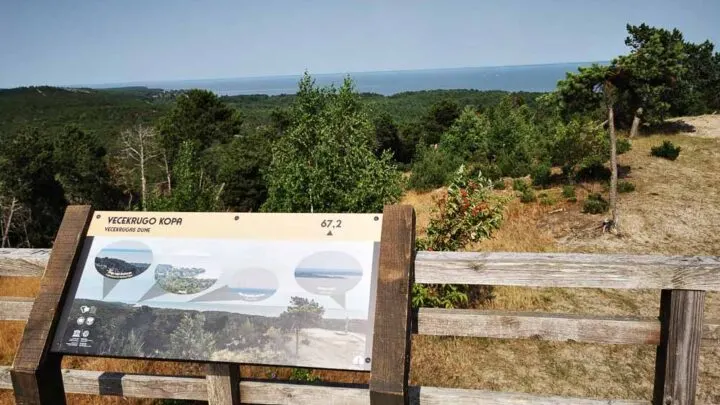
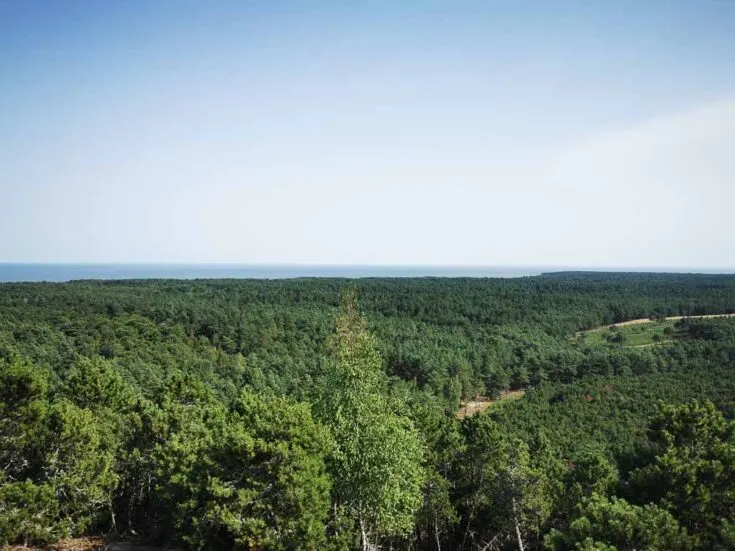
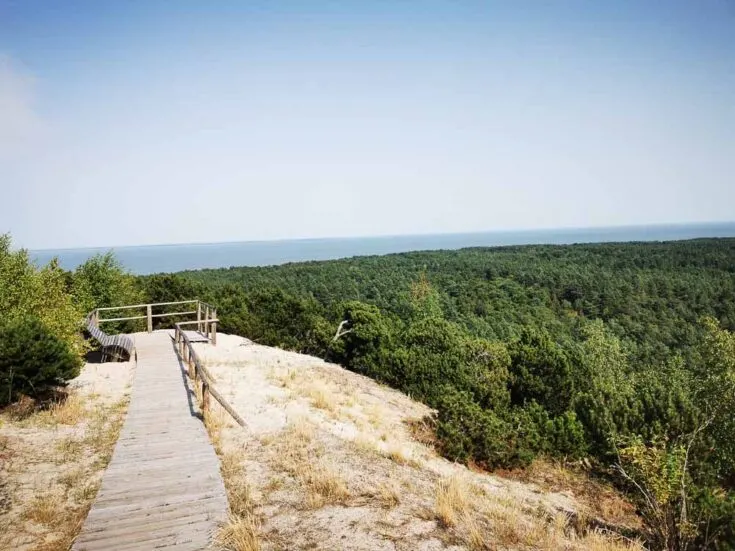
Where to Stay When Visiting the Curonian Spit
There are five villages on the Curonian Spit, with the three most visited being Smiltyne, Juodkrante, and Nida.
Each of these villages offers a variety of accommodation options, from vacation rentals to hotels.
But be aware that Nida and the Curonian Spit get extremely crowded during public holidays and weekends in Lithuania, and every accommodation get booked out weeks in advance.
So often, you are better off staying in Klaipeda and doing day trips here.
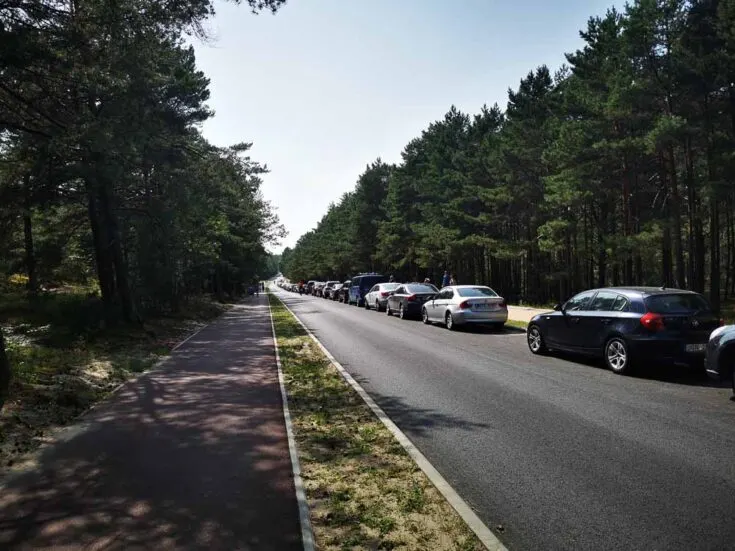
Nida
Nida is the most beautiful and characteristic village found on the Curonian Spit.
The charming town is home to traditional wooden houses, pristine beaches, magnificent golden dunes, and plenty more. There are many lovely places to stay in Nida, including guest houses and hotels.
Kastytis Guesthouse
The Kastytis Guesthouse is a great option for families visiting the Curonian Spit. The accommodation offers a comfortable space surrounded by nature.
It is ideally located near several Nida attractions, including Sunu Beach, Neringa History Museum, and the Herman Blode Museum.
Hotel Jelita
The three-star Hotel Jelita is also a good option for those seeking accommodation in Nida. The stylish, half-timbered building sits just 300 meters from the Curonian Lagoon.
In addition to the beach, there are also plenty of cycling and hiking opportunities nearby. To fuel you up for your adventures, there is a restaurant on the ground floor serving various tasty dishes.
Juodkrante
Juodkrante is the second largest village after Nida and is renowned for its atmospheric Hill of Witches – a mysterious sculpture park in the woods. It’s also worth visiting for its 19th-century French Riviera-inspired villas.
Comfort Stay – Juodkrante
Comfort Stay houses a number of cozy beachfront apartments. Each of these is well-equipped and features a balcony overlooking the village.
Just 1.3 kilometers away is the Juodkrante beach. This is a lovely spot if you’re looking to explore the natural wonders of the Lithuanian national park.
Smiltyne
On the northern tip of the Curonian Spit is Smiltyne, a narrow strait connecting the Curonian Lagoon and the Baltic Sea. As the village is closest to the mainland, it serves as a public beach to the residents of Klaipeda.
Smiltynes Jachtklubas
The Smiltynes Jachtklubas offers several lovely and spacious accommodations in Smiltyne. Each of the rooms at this unique hotel offers spectacular views of the Curonian Lagoon.
There is also an on-site restaurant and a number of activities for guests to enjoy, like cycling and hiking.
Klaipeda
If you do not intend on staying on the spit itself, then Klaipeda is your best bet. This charming city is renowned for its stunning architecture, cobbled streets, and thriving food scene. Klaipeda offers visitors a variety of accommodation options.
These range from budget-friendly guesthouses to luxury beachfront hotels and resorts.
Amberton Hotel
The Amberton Hotel in Klaipeda is a four-star hotel located next to the Baltic Sea. This accommodation’s biggest draw is its proximity to Klaipeda’s city center, the old town, and other attractions.
The hotel offers a variety of modern rooms, as well as several restaurants, an entertainment center, and more.
Green Park Hotel Klaipeda
Green Park Hotel is a popular spot amongst people visiting the Curonian Spit as it is ideally located just 2 minutes from the ferry port.
The Smiltyne beaches and Klaipeda’s Old Town are also within walking distance from the hotel. For those looking for a peaceful getaway while visiting Klaipeda, this is a good option.
Start Planning Your Kursiu Nerija Trip
Whether you plan to stay on the peninsula or take a day trip from Klaipeda, visiting the Curonian Spit is a must on any Lithuania trip.
With its seemingly endless sand dunes, unspoiled beaches, and lovely villages, it is truly one of Europe’s most beautiful destinations.
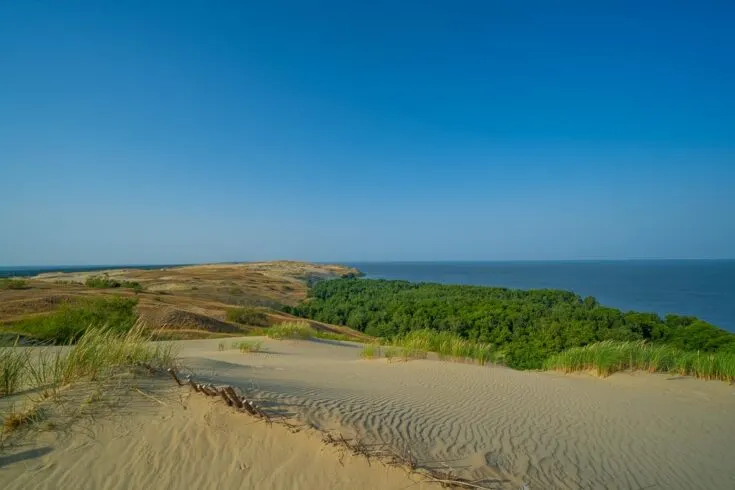
While the Curonian Spit is best enjoyed during the summer months, stopping by during the off-season also has its charms.
If you’re looking for another great addition to your Lithuania itinerary, be sure to visit the Uzupis neighborhood. This hidden gem is filled with interesting surprises.
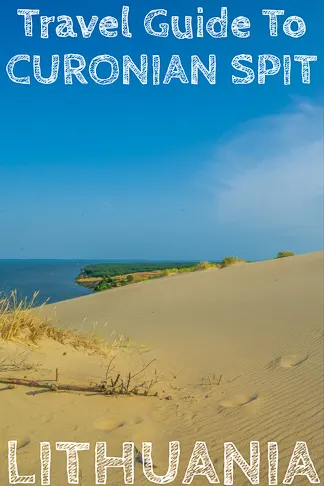

Laila Travels
Friday 3rd of September 2021
Great itinerary to follow!